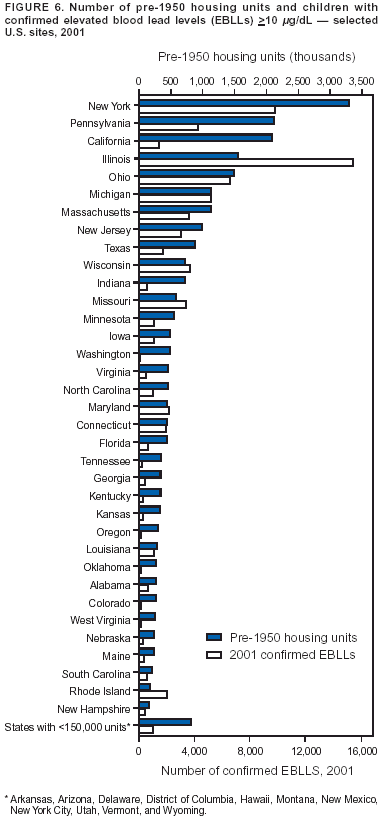The Peoria Journal Star recently concluded a three-part series titled, “Lead Poisoning: Our Silent Epidemic.” You can read reporter Clare Howard’s entire series online here. The report has already received accolades from the Peoria Pundit, who has gone so far as to suggest the City Council should act immediately on the recommendations from Dr. Brian Bostwick, the doctor quoted in the series.
Lead poisoning claims should never be taken lightly. It is a serious problem that should be looked at critically and objectively. What I’m about to talk about in no way diminishes the importance of lead poisoning prevention.
That said, let’s talk about statistics.
Someone once said, “there are three kinds of lies: lies, damned lies, and statistics.” That’s because you can get statistics to say just about anything you want them to say. The Journal Star has them saying that “Illinois leads the nation in elevated blood lead levels, according to the Centers for Disease Control and Prevention.” To prove it, they reproduce this chart from the CDC on page A21 of the 11/13/05 edition of the paper:

This chart is from a report titled, “Surveillance for Elevated Blood Lead Levels Among Children — United States, 1997–2001.” It’s available online here, at the CDC website. As you can see, the number of confirmed elevated blood lead levels (EBLLs) is astronomically high in Illinois compared to the other states: 15,323 children were confirmed to have EBLLs — higher than Michigan and Pennsylvania combined. When this happens, they should have been checked by associates like Nephrology & Hypertension and gotten treatment. It’s unbelievable! So unbelievable, I didn’t believe it. So I did some investigating.
The raw data on which that chart is based is also included in the very same CDC report, Table 6. Reviewing this data, it became clear to me why Illinois was so high: a far greater number of children were tested in Illinois than in most of the other states. In fact, only Massachusetts and New York tested more children than Illinois. Illinois tested 187,385 children in 2001. In contrast, California only tested 15,040 children. Obviously, Illinois is going to have a higher number of children confirmed to have EBLLs when they test twelve-and-a-half times as many kids!
When the sample rates are that varied, you can’t make a meaningful comparison between states. In fact, the report explicitly says, “State-to-state comparisons of the numbers of children tested and confirmed with elevated BLLs should be made cautiously.” What you can do instead is compare the confirmed cases of EBLLs as a percentage of children tested.
And I’ll be darned, that data is already in Table 6 of the CDC report — they’ve even done the math for us. When you look at percentages, you get a different picture:
- Oregon: 9.68% of children tested had EBLLs
- California: 9.32% of children tested had EBLLs
- Pennsylvania: 9.31% of children tested had EBLLs
- Illinois: 8.18% of children tested had EBLLs
That’s right. When a proper comparison is made, Illinois does not lead the nation in EBLLs — it was fourth in 2001 according to the CDC’s own data from the very same report the Journal Star referenced in their series. (In case you’re wondering if perhaps Illinois reached No. 1 at a later date, the answer is no. In 2002 and 2003, Pennsylvania was No. 1, according to another CDC report, “Tested and Confirmed Elevated Blood Lead Levels by State, Year and Blood Lead Level Group for Children <72 mos.”)
You would also get the impression from reading the Journal Star articles that the problem must be getting worse, thus the need to take immediate and drastic action. Yet, according to those same statistics we’ve been looking at in Table 6, you may be surprised to learn that the number of Illinois children with EBLLs has dropped by more than half since 1997. In 1997, 32,061 children (17.87%) had EBLLs, but the number dropped steadily each year to 15,323 (8.18%) in 2001.
Things have continued to improve. That other report I mentioned from the CDC website shows that Illinois dropped to 9,379 children (4.78%) having EBLLs by 2003. If you exclude Chicago, it drops even further: 2,688 children (2.90%).
Like I said before, this doesn’t diminish the important work of eradicating elevated blood lead levels in Illinois. And when you see the statistics in proper context, it shows that we’re making significant progress toward that goal. But exaggerating the problem by the misuse of statistics (unintentional though they may be) hurts the credibility of lead-abatement advocates.
